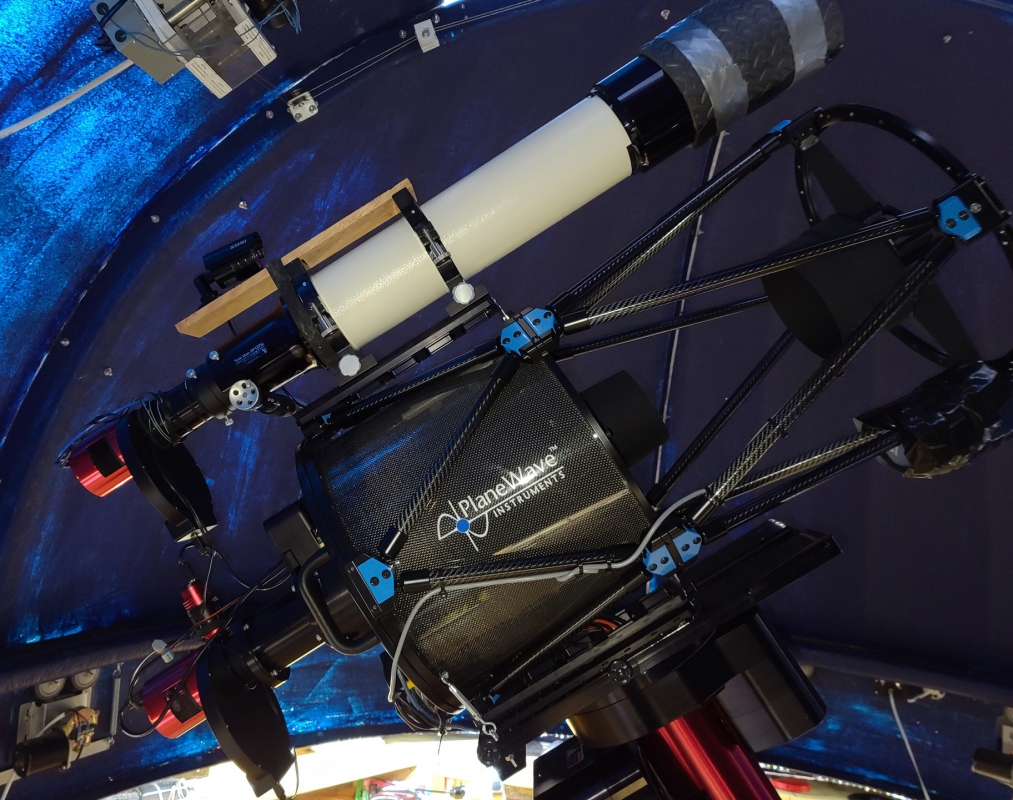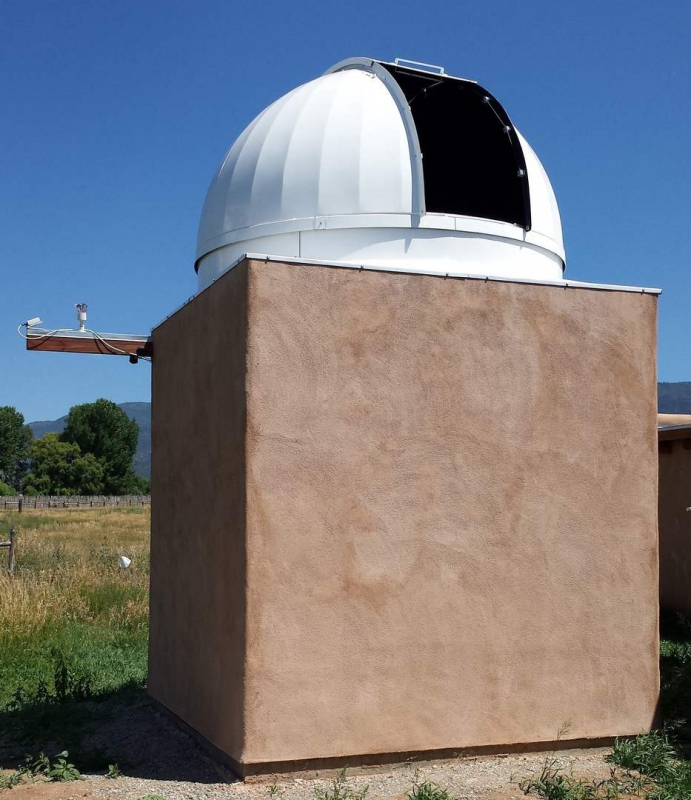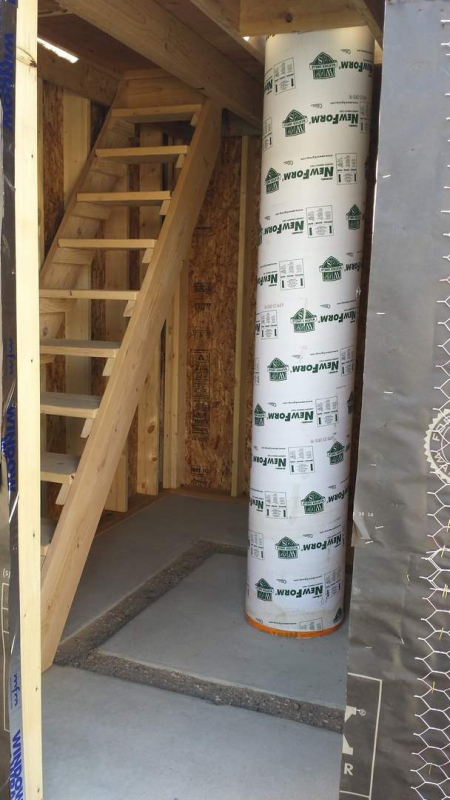NP127is: Return to Imaging over Taos, NM
Back in March 2019 this blog featured a Tele Vue-NP127is APO refractor image gallery by astrophotographer Jerry Macon. All those images were done with red, green, and blue (RGB) filters or a dedicated color camera. Jerry has since added the Hubble Palette filters (SHO: Sulfur II, Hydrogen-alpha [Hα)] and O III) to his repertoire, and the color camera is no longer used. We feel Jerry’s imaging has evolved to another level of perfection in the past two years. So in this blog, we look at some of his latest work with the NP127is.
Sh2-240 (Simeis 147) Supernova Remnant
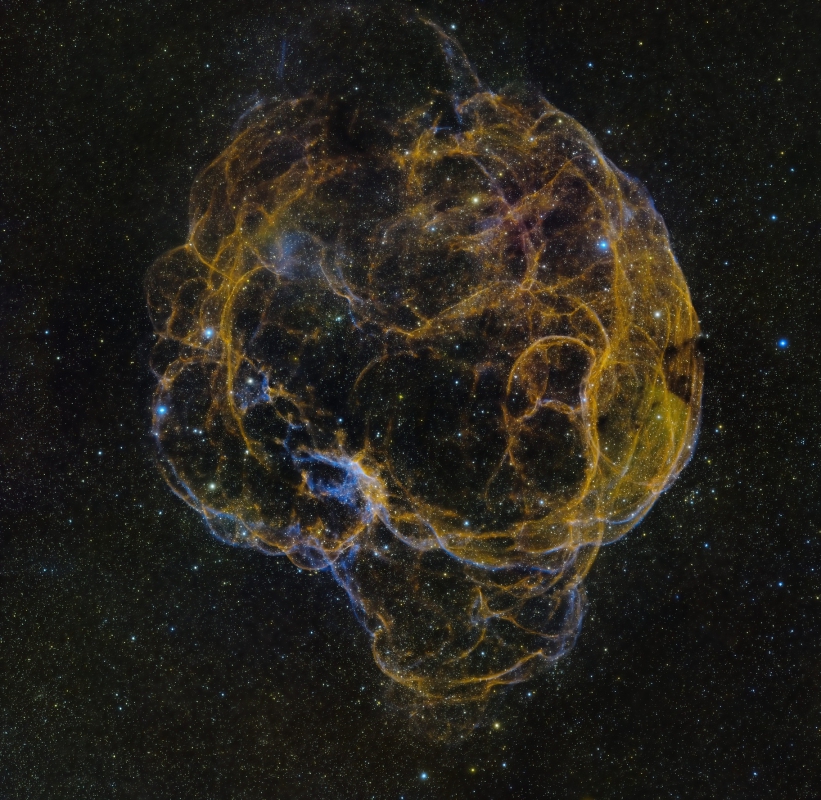
Cataloged as Simeis 147 and Sharpless 2-240, the name “Spaghetti Nebula” is its most descriptive moniker. This nebula is huge: it spans 3° (6 full-moon widths). It is the remnant dust and gas of a massive star that ended life in a supernova explosion. In this case, it left behind a pulsar (a radio-emitting, spinning neutron star). Due to discrepancies between the estimated age of the nebula and pulsar, some posit that two supernovae explosions happened in this region some time apart. Whatever the history of the object, we can say Jerry’s Spaghetti Nebula is quite tasty to the eye.
Compare Jerry’s image using Hubble Palette filters with one done exclusively in Hα light by Jim Burnell (Tele Vue-NP101is with SBIG STX-16803 camera). Both are resplendent in loops and wisps, but the differences are apparent between the two techniques: the black and white Hα image is detailed, but the colors in the Hubble Palette image offer a dimensional quality that brings out the depth of the nebula structure.
Cave Nebula
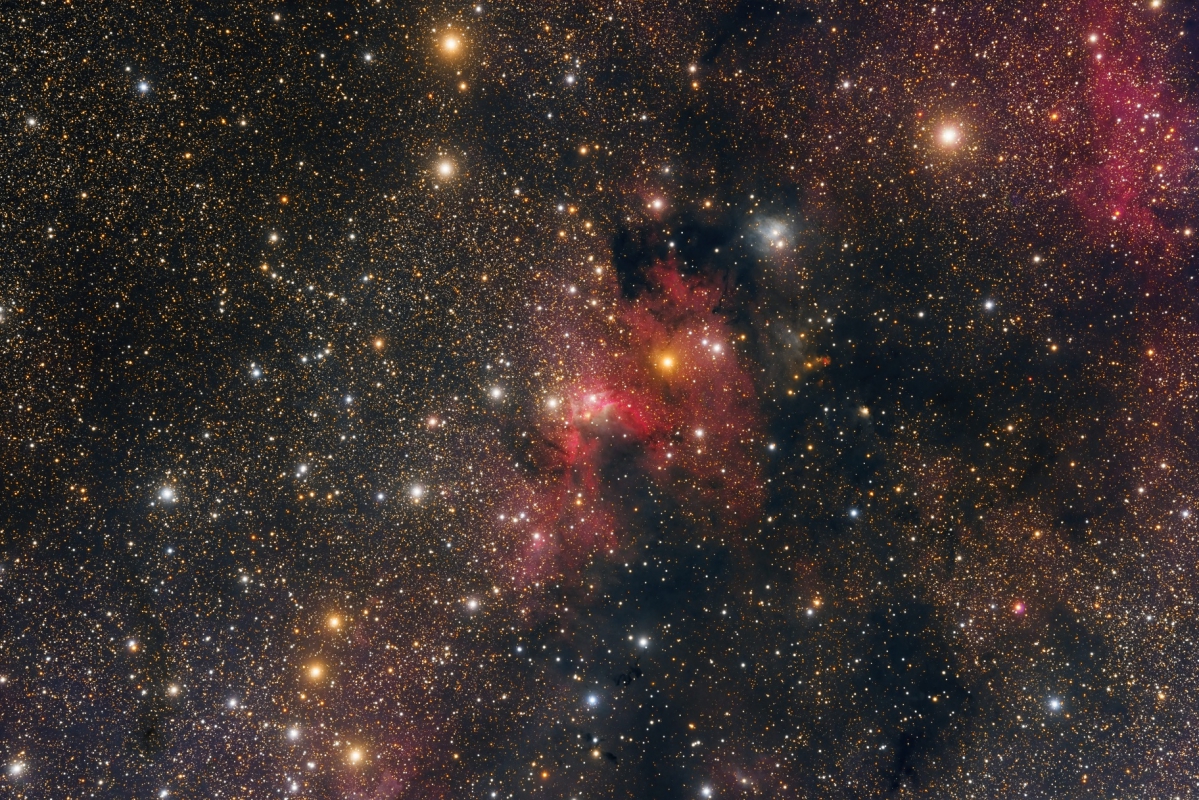
Emission, reflection, and dark nebulosity delightfully combine with young stars in this area of Cepheus around the Cave Nebula (dark area with surrounding red nebula) at the center. Emissions are powered by stellar radiation from huge young stars that will eventually explode to scatter new clouds of dust and gas into the formation. Stellar radiation pressure is causing parts of the cloud to collapse and trigger new star-forming regions. In turn, the stellar radiation from these new regions continues the process of creating the next generation of star-forming regions and so forth.
Sh2-64 (W40) Smoking Embers Nebula
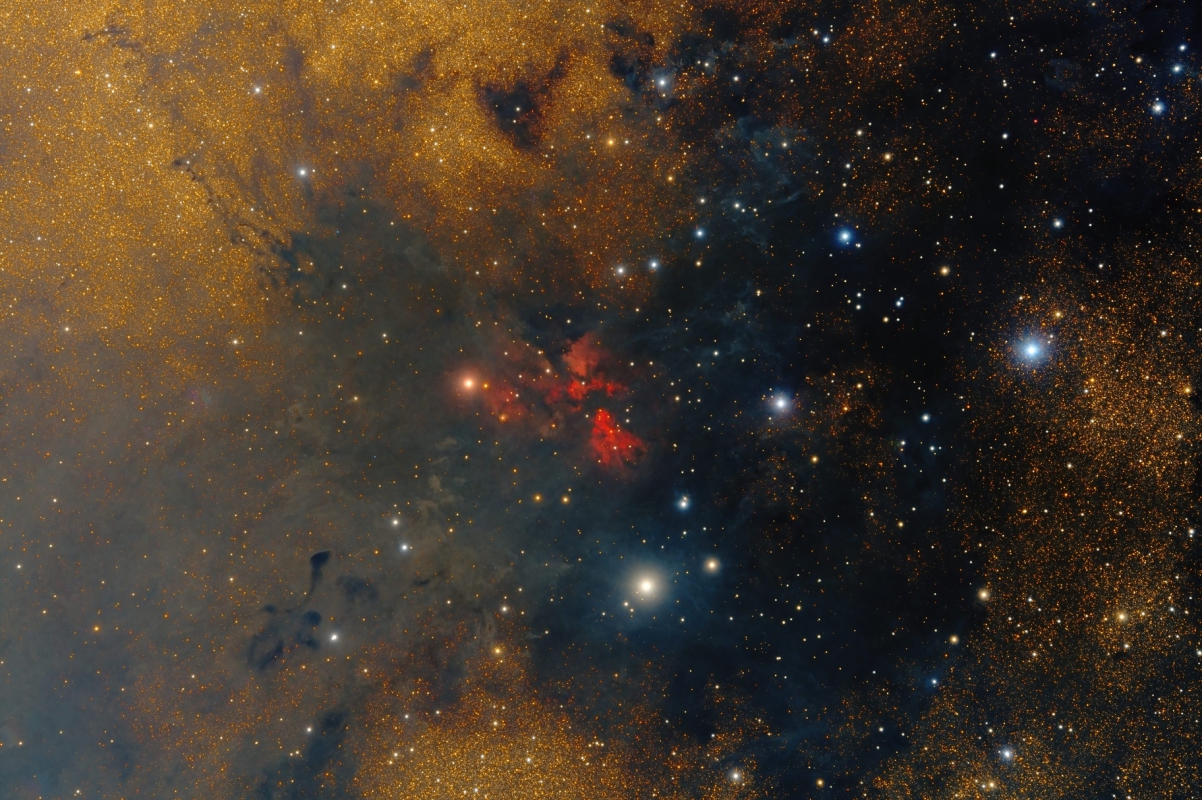
Jerry explains this object and how it was imaged in his own words.
Sharpless 2-64 (also known as Westerhout 40) is an emission nebula in Serpens about 1000 light-years distant and the central Hα-dominant (red) portion of this image. It is part of the Serpens Cloud Complex, and as the image suggests, it is a complex region containing many cataloged Lynd Dark Nebulae (LDN), SH2-64, and several unidentified emission nebulae.
I have called it the Smoking Embers Nebula because it is so like a smoking fire with bright red coals, and lots of smoke going off in the direction of the wind, which in this case is to the lower left. Only a small amount of Hα has been added to the RGB image to add a little intensity to the bright coals.
I found this a rather challenging target because there is such a contrast between the bright star-rich fields in the top left, bottom-central regions, and very dark central areas dominated by dark nebula. It requires some creative stretching to bring out the details.
Sh2-1 Reflection Nebula
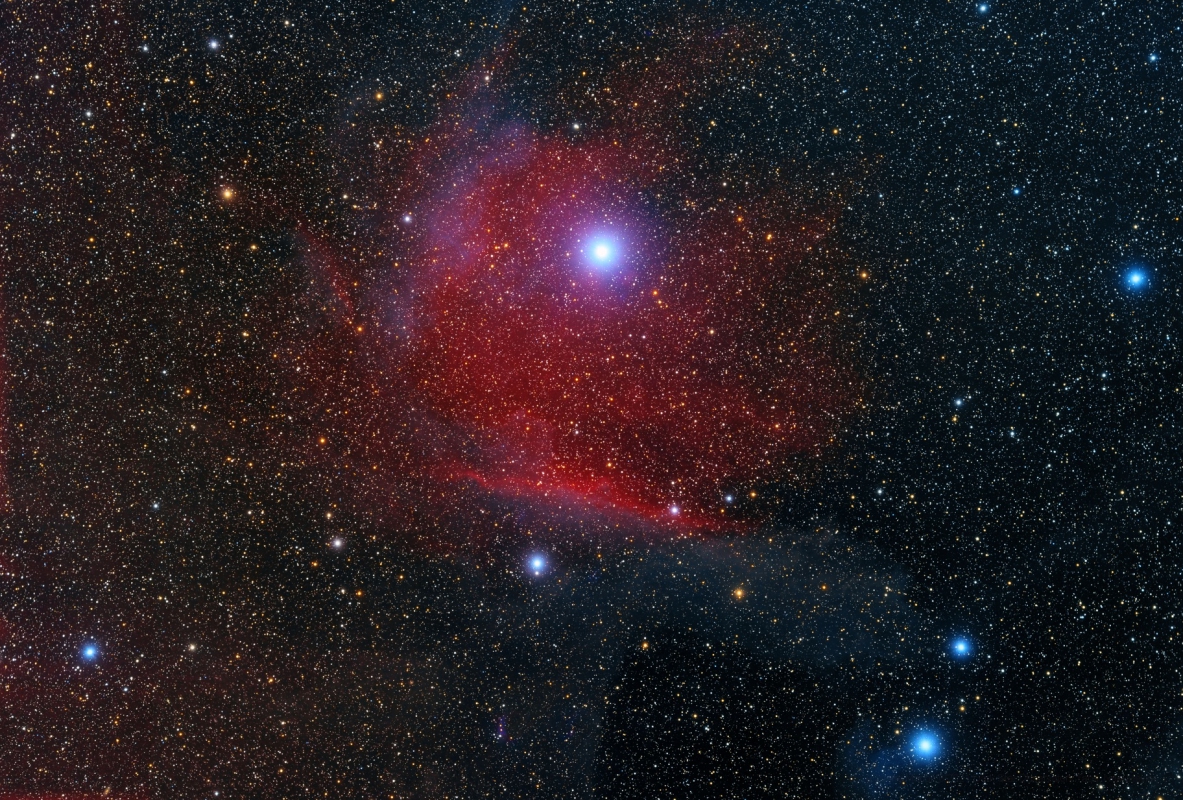
The Sharpless catalog mostly lists regions of ionized hydrogen gas (H II regions) that have had recent star formation. Some planetary and supernova remnants were included. Editions were published in 1953 (Sh1) and 1959 (Sh2). The first item in the catalog, Sh2-1, is one of the easiest to find because it is a reflection nebula centered on the 2.9 magnitude star Pi Scorpii. This star is just coincidently placed and is not part of the nebula that spans 150 arcminutes. The color of Sh2-1 is characteristic of red hydrogen-alpha emission lines from ionized hydrogen atoms. The blue color near the edge of the nebula is caused by dust that preferentially scatters blue light.
Rho Ophiuchi Complex
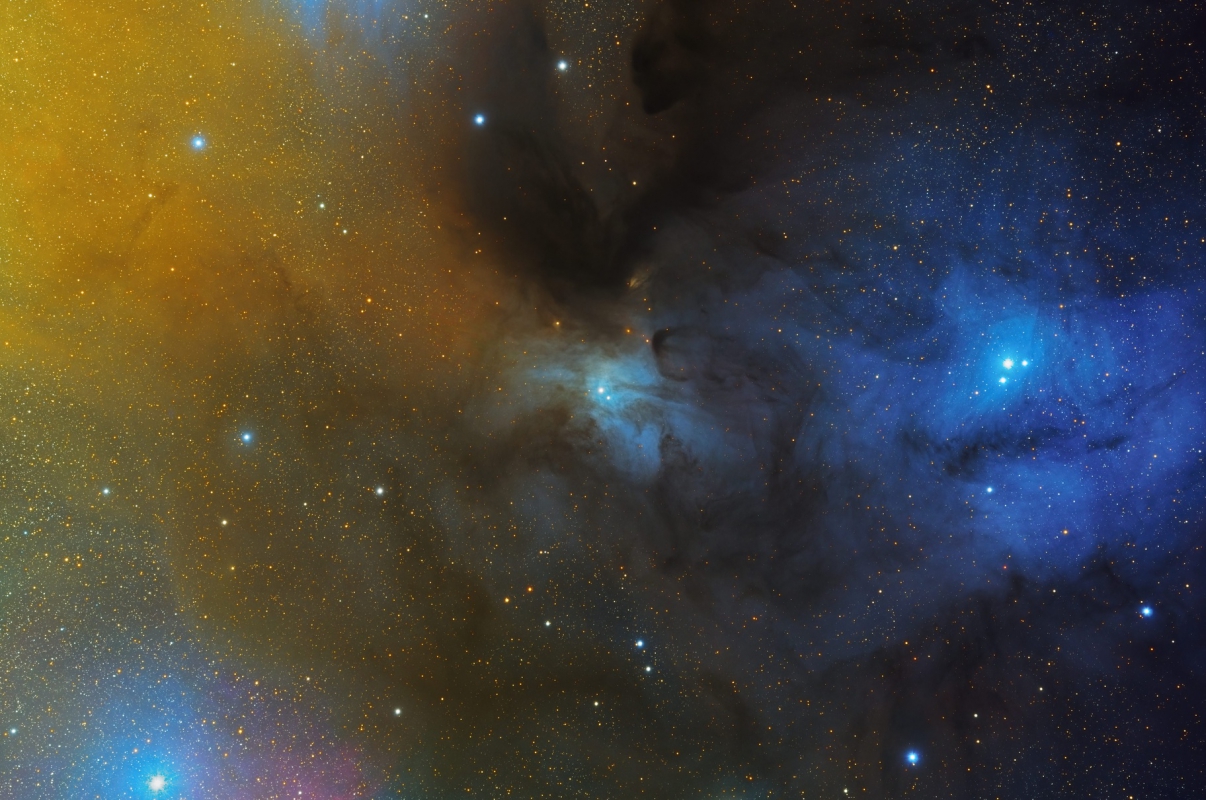
Not far from Sh2-1, the star Rho Ophiuchi is embedded in the blue cloud on the right side of the above image. The cloud is a reflection nebula that scatters blue light from the stars around it. In the center of the image is IC 4603, another reflection nebula that is illuminated by the bright star within. The yellowish cloud on the left is mass loss from the red supergiant star Antares (α Scorpii, a binary star, one of the brightest stars, and also known as “the heart of the scorpion”) that is off the side of the photo. The yellow glow is attributed to Anatres’ blue-white companion star.
Altogether, this region is a study of color contrasts. Jerry says he is fond of targets that have a lot of color and he re-images this region with every hardware update he does.
Flying Bat and Giant Squid nebulae
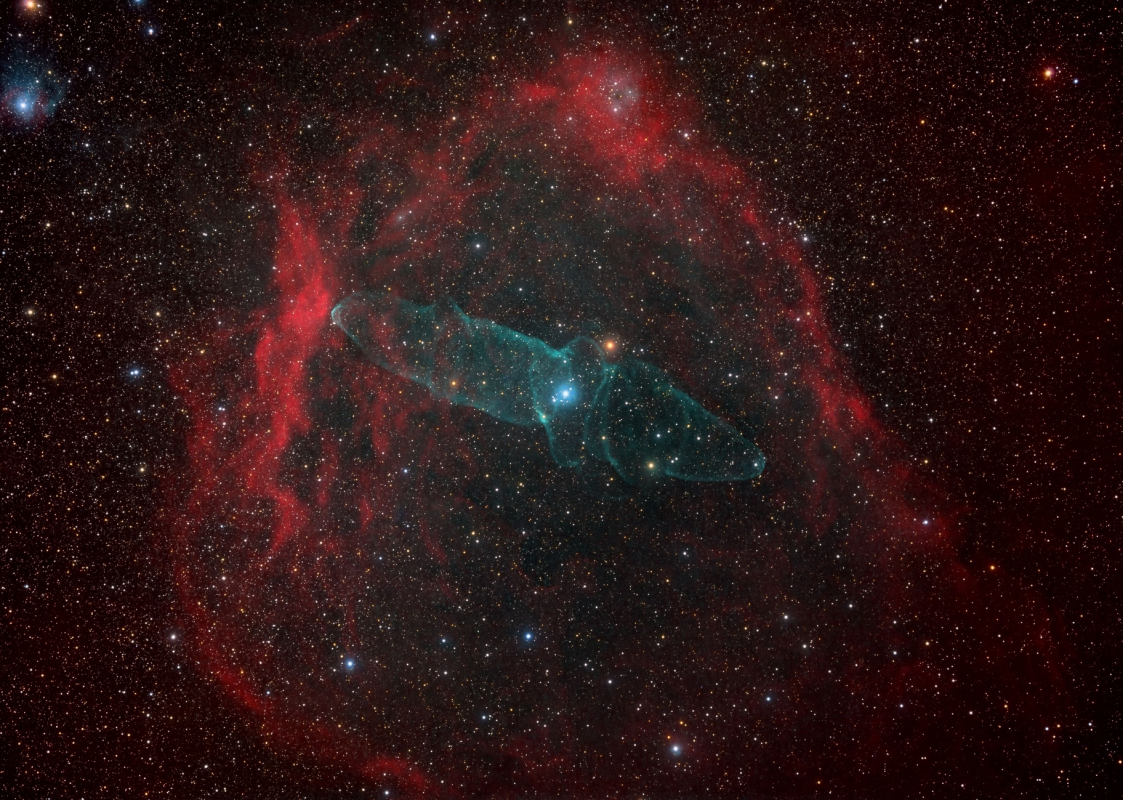
In the constellation Cepheus, you’ll find this red, hydrogen emission (H II) region known as the “Flying Bat Nebula” (Sh2-129). The blue-green outline of a Giant Squid (Ou4), superimposed on the bat, is caused by the glow of doubly ionized oxygen given off by the massive bright stars in the region. The “Squid” feature has only been known since 2011 when it was discovered by an amateur astronomer. The blue glow of reflection nebula VdB 140 is in the upper-left corner.
Sagittarius Star Cloud and M18
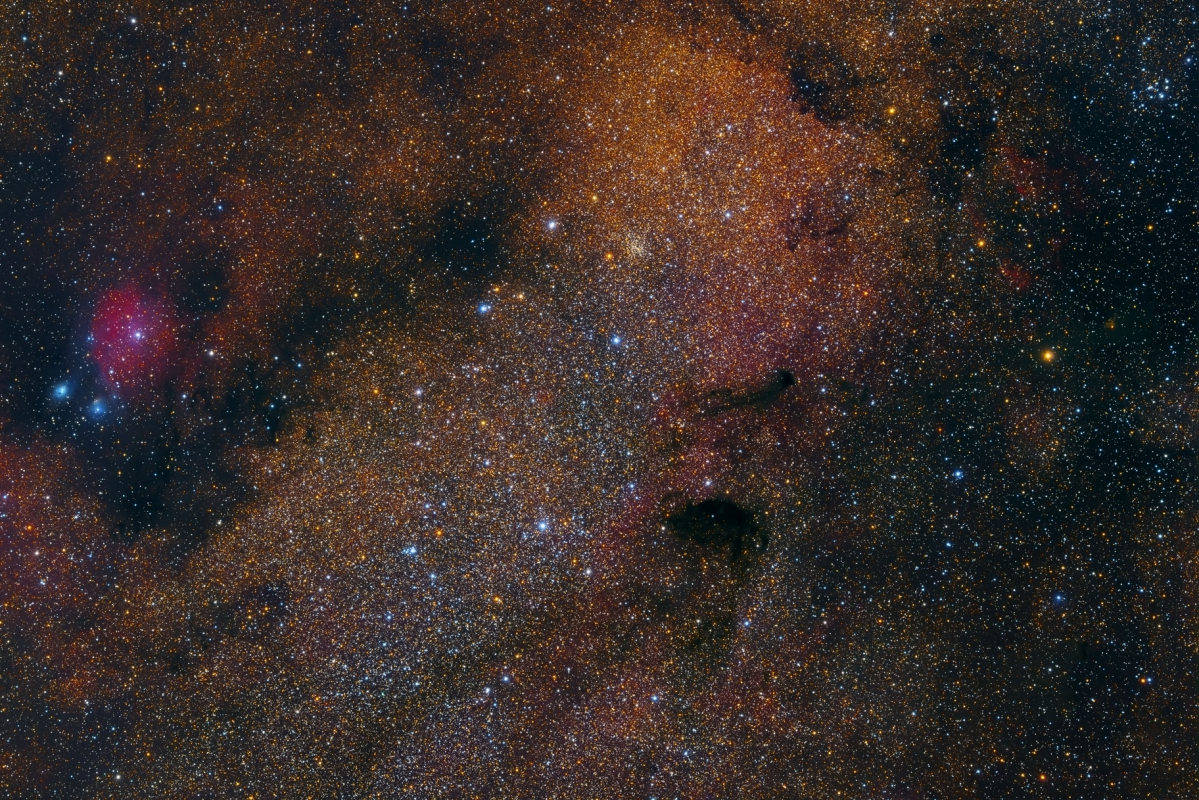
Spanning eight full-Moon widths, the Sagittarius Star Cloud (M24), is a patch of sky devoid of the obscuring interstellar dust found in the arms of the galaxy. This allows us to see stars in the Sagittarius arm of the galaxy as far as 10,000 to 16,000 light-years. So dense are the stars here, a typical binocular field of view can capture 1,000 stars at once! On the far left side is a pocket of red and blue — fronting a sinuous dark lane of dust against the stars of the Sagittarius arm of the galaxy. The red is the glow of IC 1284, an emission nebula, while the blue dots are two reflection nebulae (left-to-right: VdB 119 and VdB 118). On the upper-right corner is another treat: the open star cluster M18 (NGC-6613).
We’ve only shown a small sample of Jerry’s latest images. But you can see the fine dedication to imaging and processing in his work. We wish Jerry continued success with wide-field imaging under the Bortle 3 skies of Taos, NM, with the Tele Vue-NP127is!
Did you observe, sketch, or image with Tele Vue gear? We’ll like your social media post on that if you tag it #televue and the gear used. Example:
#televue #np127is #IC4603
Do you want your Tele Vue images re-posted on Tele Vue Optics’ Social Media accounts? Use this hashtag for consideration:
#RPTVO
More Info
- Visit Jerry Macon’s AstroBin page for more great images.
- Our original blog post on Jerry: NP127is: Imaging the Skies Over Taos, NM.
- More Tele Vue-NP127is image galleries on this blog
- Learn more about the Tele Vue-NP127is on our website (mobile site).



